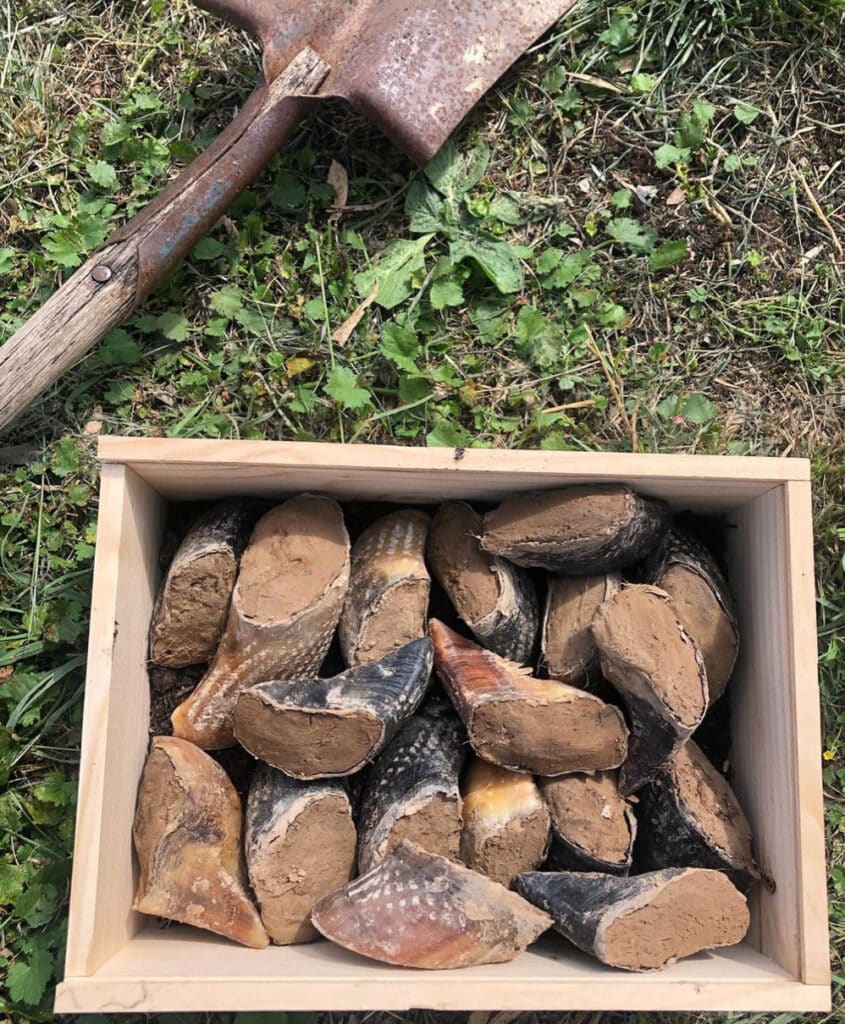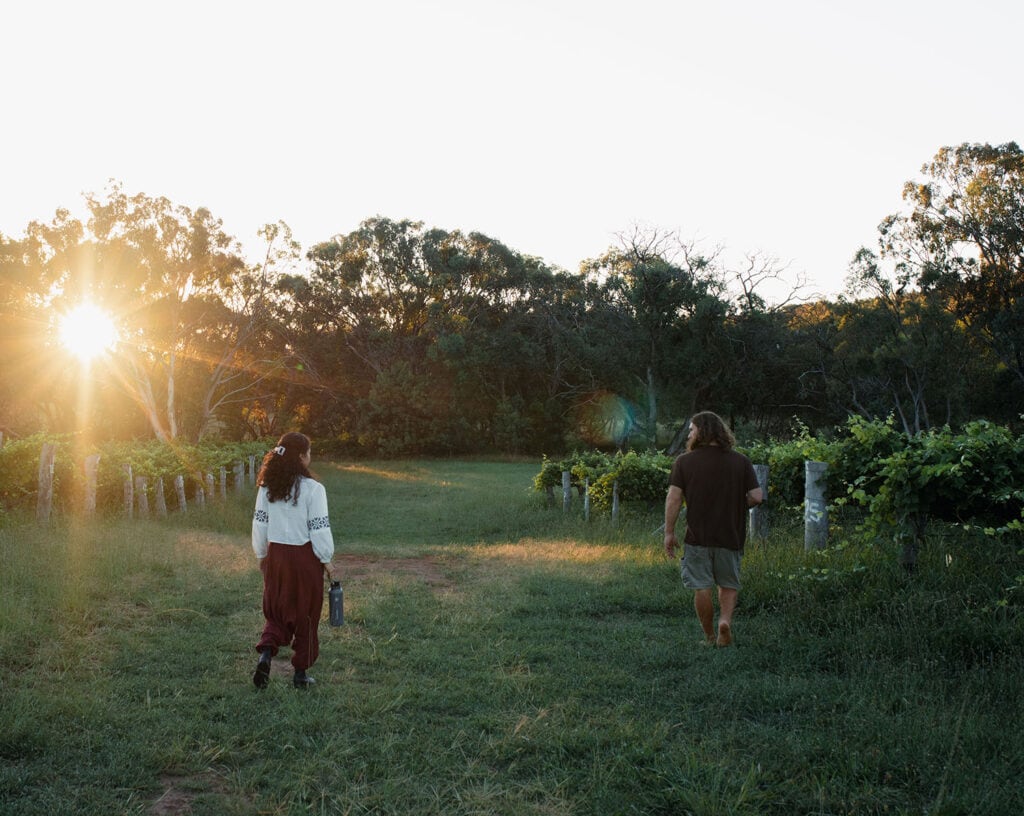Trippin Round the Sun – 2023
2023 TRIPPIN’ ROUND THE SUN The act of naively undertaking an earthly task – equating in time to the rotational length of the
Recipes kill creativity. And dogma taints any great movement. The biodynamic movement is finding itself more and more caught on the nauseating carousel of dogma and any creativity is fading away with the adherence to recipes. It was made quite clear that Rudolf Steiner’s 1924 Agriculture Course was not presented with the intention of being a fixed, unchanging set of dogma’s, what he really presented was a series of indications. The course gives us a different lens through which to view the world, and in particular living natural systems. I don’t think it was presented as a recipe which ought to be strictly followed.
We can use the thought patterns of Rudolf Steiner, and his innovative approach of combing substances (i.e. plant materials, manures, crystals) and animal sheaths, to create potent preparations that are linked to various energetic processes which underwrite all of life as we know it. In order to fully engage with the creative biodynamic approach, we must immerse ourselves deeply into the Goethean worldview of Phenomenology. Where instead of using direct cause and effect links, which is the foundation of modern science and which inevitably fails in the realm of the life sciences where an infinite number of variables exist, we instead look for patterns and similarities and make much larger connections.
 We are currently using the phenomenological approach, and the knowledge and foundations set down by Rudolf Steiner, to create some experimental biodynamic preparations. The first we are making on the Autumn Equinox is a variation on the BD500 preparation, we’ll be calling it BD 500-esque (hoofed vermicast). Long live Satan. Something that was stressed in the Agriculture Course was the importance of making preparations onsite, with the influence of a farm’s individuality playing a significant role in the finer characteristics of the finished preparation. As we currently don’t have cow’s and hence cow manure, on our farm or around our vineyard, we intuited that the vermicast (worm manure) we make from organic household/garden waste would be a fine substitute.
We are currently using the phenomenological approach, and the knowledge and foundations set down by Rudolf Steiner, to create some experimental biodynamic preparations. The first we are making on the Autumn Equinox is a variation on the BD500 preparation, we’ll be calling it BD 500-esque (hoofed vermicast). Long live Satan. Something that was stressed in the Agriculture Course was the importance of making preparations onsite, with the influence of a farm’s individuality playing a significant role in the finer characteristics of the finished preparation. As we currently don’t have cow’s and hence cow manure, on our farm or around our vineyard, we intuited that the vermicast (worm manure) we make from organic household/garden waste would be a fine substitute.
Steiner dedicates several paragraphs in the Agriculture Course talking about the amazing qualities of the worm, and its importance to soil. On a side note; Charles Darwin also marvelled at the earthworm, not only did he refer to them as the “intestines of the soil”, he also dedicated a whole book to the subject. Steiner spoke about the earthworm being a vent for any excessive etheric forces in the soil and also a regulator of vitality in the soil.
 “One ought to study the life of earthworms in relation to the soil, for these wonderful animals allow just that amount of etheric life to remain in the soil as is needed for the growth of plants.”
“One ought to study the life of earthworms in relation to the soil, for these wonderful animals allow just that amount of etheric life to remain in the soil as is needed for the growth of plants.”
He goes on the talk about how worms have a mutual relationship with the calcium or lime processes here on the Earth, They have a strong affiliation with the earthly, mineral kingdom. Anatomically speaking this strong relationship to the lime processes are evident with the worm’s calcareous gland. It excretes calcium carbonates (calcites) as the worm digests organic matter. Essentially worms are the natural ‘limer’s’ of the soil.
“Again, the world of grubs and worms may be said to stand in a mutual relationship to the lime, i.e. to the mineral part of the earth;”
“The relationship between the worm and grub world and lime brings about the drawing off of the etheric element. This is the function of lime, but it performs this function in co-operation with the world of worms and grubs.”
 As most cattle in Australia are de-horned, we have also struggled to find cow horns that we are able to fill with the vermicast for burial over winter. Another heretical step we have taken is instead of using cow horns, we will be using cow hoofs (the same ones we give to our dogs to chew on). Cosmic puppies. Again looking to the Agricultural Course, Steiner indicates that the horns and the hoofs both conduct a very similar function in the cow: reflecting any astral or etheric formative forces moving from the metabolic system outward, back inwards. In the several paragraphs where he talks about this process, Steiner refers to the two as having the same effect. Whilst intuitively I feel the horns may produce a stronger resonance, I also sense that the hoofs will nonetheless have a very similar effect, if not the same. I view both the horn and the hoof as something akin to electrical capacitors, storing and condensing cosmic energy within them.
As most cattle in Australia are de-horned, we have also struggled to find cow horns that we are able to fill with the vermicast for burial over winter. Another heretical step we have taken is instead of using cow horns, we will be using cow hoofs (the same ones we give to our dogs to chew on). Cosmic puppies. Again looking to the Agricultural Course, Steiner indicates that the horns and the hoofs both conduct a very similar function in the cow: reflecting any astral or etheric formative forces moving from the metabolic system outward, back inwards. In the several paragraphs where he talks about this process, Steiner refers to the two as having the same effect. Whilst intuitively I feel the horns may produce a stronger resonance, I also sense that the hoofs will nonetheless have a very similar effect, if not the same. I view both the horn and the hoof as something akin to electrical capacitors, storing and condensing cosmic energy within them.
“The cow has horns in order to reflect inwards the astral and etheric formative forces, coming first from the metabolism, which then penetrate right back into the metabolic system, so that increased activity in the digestive organism arises by reason of this radiation from horns and hoofs.”
“The horn is something which radiates etheric life and even the astral element. Indeed, if you were able to enter into the cows belly, you would smell the current of etheric-astral life which streams back from the horns: and the same thing is true of the hoofs.” Thus spoke Rudolf.
Following this train of thought, we have decided to take ‘worm manure’ and place it in a cow hoof over the winter, making the blasphemous BD500 (Hoofed Vermicast). Go figure. I guess the beauty of experimenting in the field of biodynamics is that the worst that can happen is that we end up with some delicious microbially rich organic matter under our hoofs.
Our heretical hoofs filled with vermicast and sealed with clay:


2023 TRIPPIN’ ROUND THE SUN The act of naively undertaking an earthly task – equating in time to the rotational length of the
A VIGNERON, A VINE AND THREE PLANETS WALK INTO A BAR… The Vigneron says to the Vine, “show me how you flower.”


First generation farmers who believe that soil health & nutrition is not only important but also very cool. Our minimalist philosophy carries from our feet on the earth, through our hearts and to our vines.
Liquor license number: LIQW880010288
‘It is against the law to sell or supply alcohol to, or to obtain alcohol on behalf of, a person under the age of 18 years.’
We acknowledge the traditional custodians of this land – the Wiradjuri people – who have cared for and shaped this region since the beginning of time. We hope to pay our respects to their enduring custodianship through careful and considered land management.
Design & Development by AKIRE.Studio
Join our newsletter to be the first to hear about product drops, blog posts & adventures…